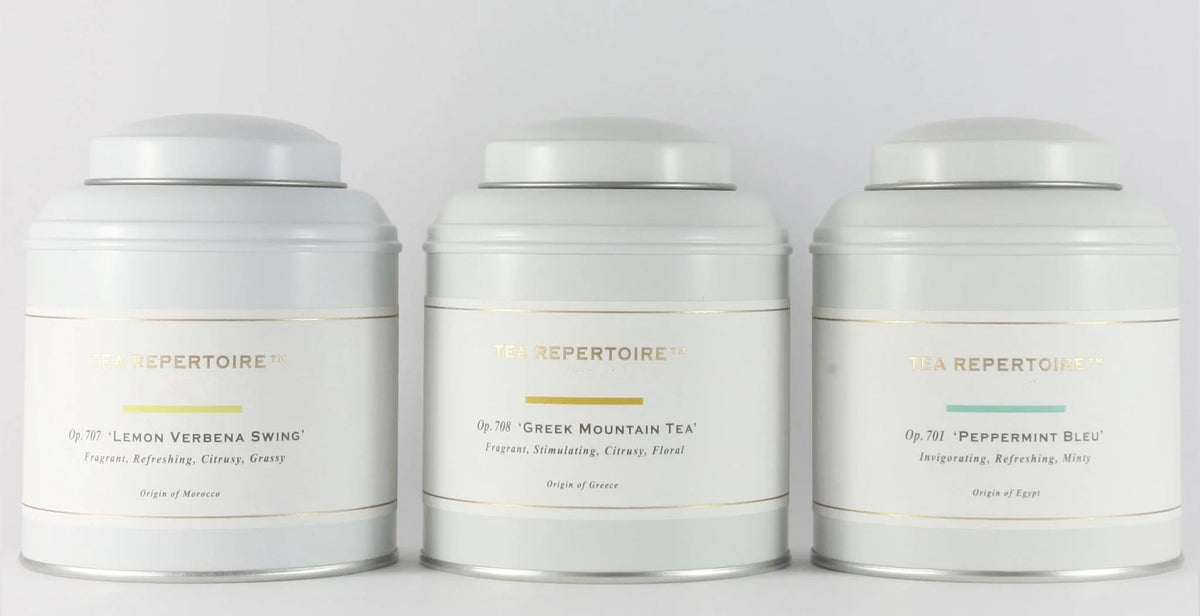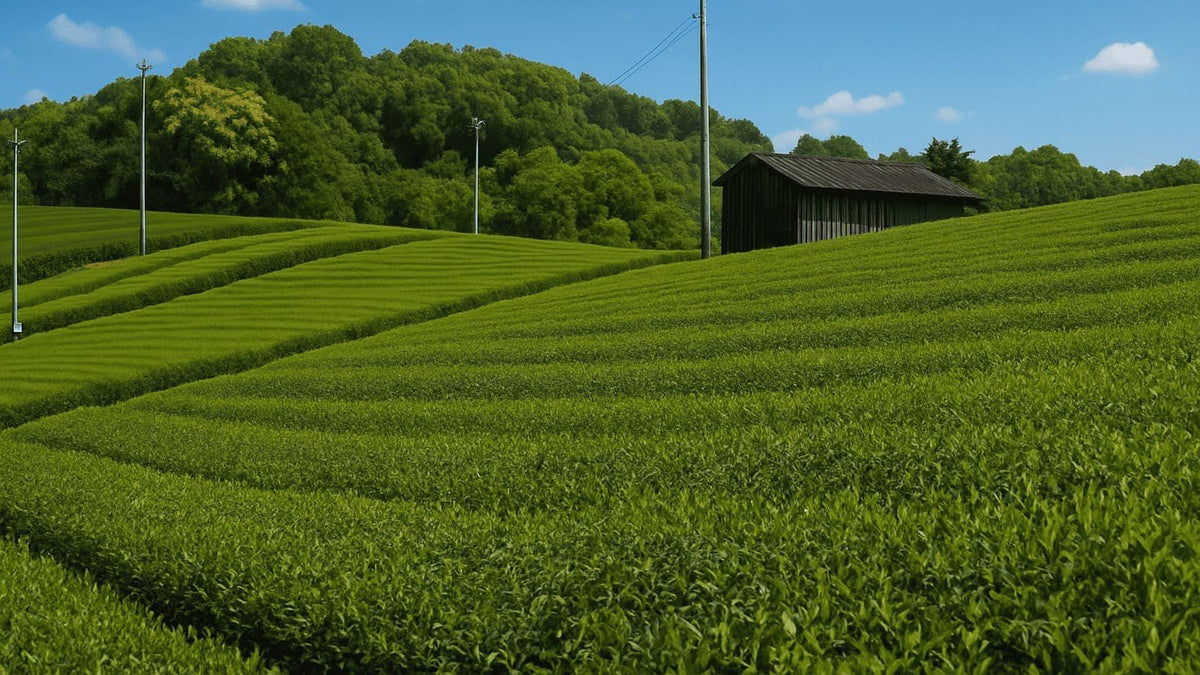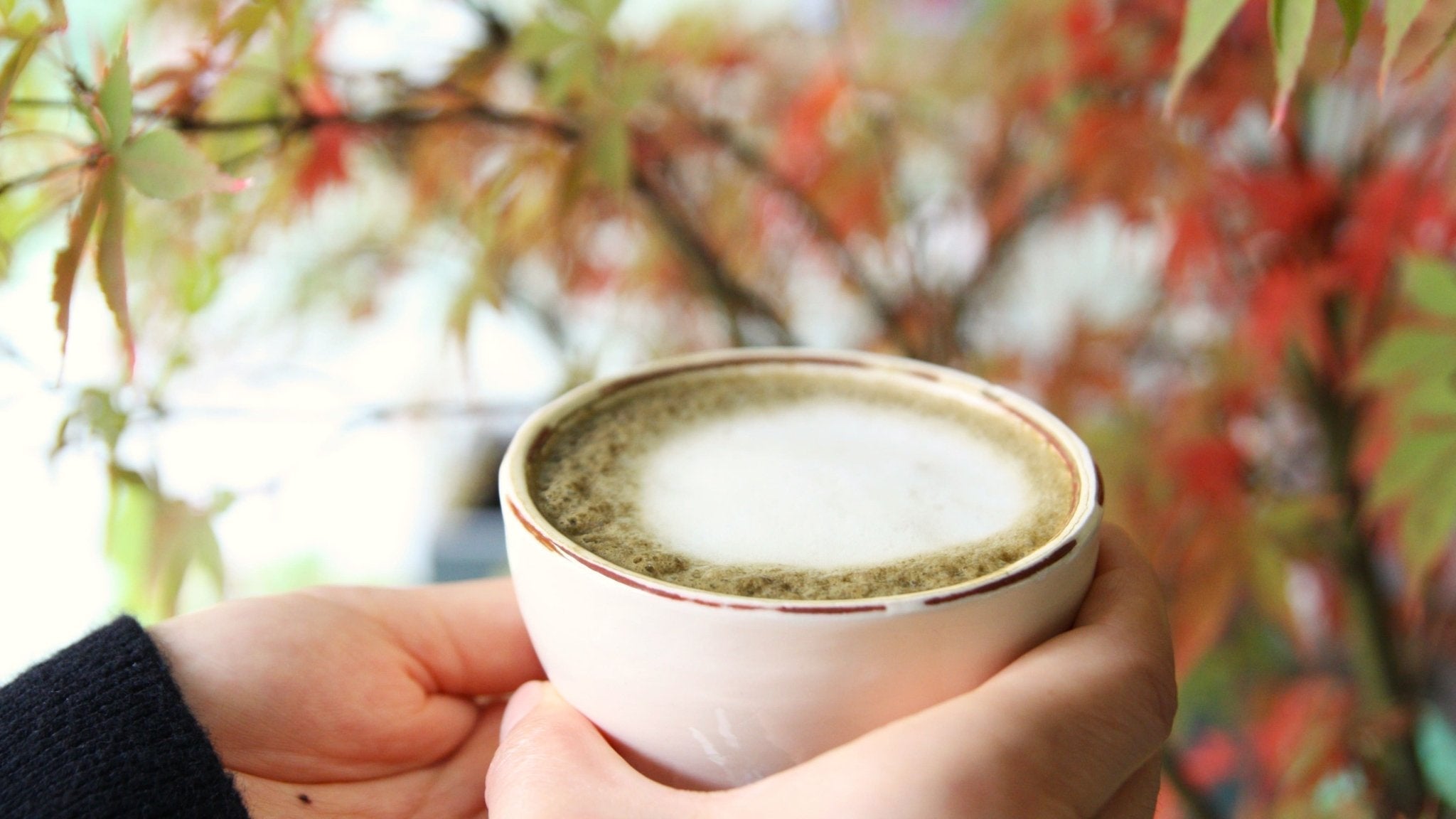How to Make the Perfect Hojicha Latte – A Barista’s Guide from Tea Repertoire
Introduction
There’s a quiet revolution happening in specialty cafés — one led not by coffee beans, but by roasted tea leaves. The Hojicha Latte has become a signature drink among baristas who seek rich aroma, and comfort in a cup. Smooth, nutty, and naturally low in caffeine, it offers a refined alternative to the intensity of matcha or espresso.
At Tea Repertoire, we work closely with a certified JAS/EU/USDA organic tea farm in Shizuoka, Japan, to source organic, small-batch delicious, gourmet Hojicha powder that’s freshly roasted and full of character. This ensures a cup that captures the essence of Japan’s tea craftsmanship — mellow sweetness, caramelised notes of roasted peanuts, and a velvety mouthfeel.

Our tea garden with organic hojicha tea from Shizuoka.
In this guide, we’ll explore how to prepare a barista-quality Hojicha Latte, understand its unique flavour structure, and learn why it’s becoming an indispensable drink in high-end cafés.
Hojicha Powder – Organic, Shizuoka, Small Batch
What Is Hojicha?
Hojicha (ほうじ茶) is a Japanese green tea that undergoes an additional roasting process, transforming its character from grassy to deeply aromatic. The leaves — often from late-season harvests — are roasted in a rotating drum in a gentle cycle. This careful roasting reduces bitterness and draws out sweet, nutty undertones reminiscent of caramelised peanuts and toasted grains.
Originating in Kyoto in the 1920s, Hojicha quickly became a household favourite in Japan for its gentle flavour and low caffeine content, making it ideal for evening consumption. Unlike matcha, which is bright and vegetal, Hojicha offers a warm, toasty aroma and amber-hued liquor that pairs beautifully with milk.
Tea Repertoire’s Hojicha Powder is sourced directly from a certified organic tea farm in Shizuoka Prefecture, where the moderate climate and skilled roasting yield a medium roast profile — perfectly balanced between sweetness and depth. The result is a powder that dissolves smoothly, creating a latte with exceptional body and aroma.
Hojicha vs. Matcha
While matcha remains a symbol of Japan’s tea culture, Hojicha offers a contrasting experience — one that resonates with baristas seeking versatility and comfort in flavour.
Here’s how they differ in practice:
-
Taste Profile:
Matcha is vivid, vegetal, and umami-driven. Hojicha, on the other hand, develops through roasting — revealing toasted, nutty notes with a natural sweetness that pairs beautifully with milk and plant-based alternatives. -
Caffeine Content:
Hojicha contains only a fraction of matcha’s caffeine, making it perfect for afternoon menus or caffeine-sensitive customers. It’s often described as a “comfort cup” — soothing and gentle without compromising depth. -
Barista Application:
Matcha can be temperamental — requiring precise whisking and balance of water temperature and quantity of matcha for preparation. Hojicha is more forgiving and integrates seamlessly into steamed milk, producing a smooth, stable texture ideal for café service.
For baristas looking to diversify their tea menu, Hojicha Latte delivers a familiar ritual with a distinct roasted identity — a Japanese roasted tea latte that brings warmth and elegance to any drinks list.
Hojicha Latte Recipe (Step-by-Step Professional Method)
Below is the Tea Repertoire barista-standard method, developed to bring out the full aroma and texture of freshly roasted Hojicha powder.
🫖 Ingredients (1 serving)
-
1 tsp (3 g / 0.10 oz) Hojicha powder
-
150 ml (5 fl oz) hot water at 80–85°C (176–185°F)
-
100 ml (3.4 fl oz) milk — dairy, oat, or soy
-
Optional: 1 tsp (5 ml / 0.17 fl oz) honey, maple syrup, or brown sugar
Step 1: Sift and Whisk the Hojicha
Sift the Hojicha powder into a small bowl to remove clumps.
Add the hot water and whisk using a chasen (bamboo whisk) or a small electric frother until smooth and lightly frothy. The aroma should immediately release a roasted, caramelised scent.

Whisking freshly roasted Hojicha powder – releasing its nutty, caramel aroma.
Step 2: Steam or Heat the Milk
For the ideal texture, use a steam wand to heat the milk to around 60–65°C (140–149°F).
If preparing at home, gently warm the milk on the stove and whisk or froth it to achieve a silky microfoam.
Avoid overheating, as high temperatures can mute Hojicha’s sweetness.

Steaming oat milk for a velvety microfoam – the key to a balanced Hojicha Latte.
Step 3: Combine
Pour the steamed milk gently over the whisked Hojicha base.
For a café presentation, aim for a 2:1 ratio of Hojicha base to milk, adjusting to taste.
Use a spoon to hold back the foam, then finish with a light layer of microfoam on top.

Combining whisked Hojicha with steamed milk for a balanced, layered latte.
Step 4: Sweeten (Optional)
Hojicha’s roasted notes shine on their own, but a touch of honey or brown sugar adds body and complements the caramel undertones.
For café menus, consider offering a sweetened and unsweetened version to suit different palates.

Finishing touch: adding a hint of honey to enhance Hojicha’s caramel profile.
Step 5: Serve & Present
Serve immediately.
Garnish with a light dusting of Hojicha powder or a simple latte art swirl.
The result should be smooth, aromatic, and visually inviting — a modern expression of Japan’s tea culture crafted for today’s café scene.

Finished Hojicha Latte – smooth, nutty, and beautifully layered.
Pro Tips for a Café-Quality Hojicha Latte
Mastering the perfect Hojicha Latte lies in attention to detail. Here are a few expert recommendations from the Tea Repertoire team to help baristas elevate both flavour and presentation.
1. Prioritise Freshness
Hojicha’s aroma fades faster than most green teas due to its roasting process. Always store the powder in an airtight tin, away from light and moisture.
For cafés, opening smaller batches more frequently ensures consistent flavour throughout service.
2. Control the Water Temperature
Water above 85°C (185°F) risks burning the leaves and flattening the aroma.
Stay between 80–85°C (176–185°F) — this brings out sweetness while preserving the roasted depth.
3. Whisk with Intention
Whisking isn’t just mixing — it oxygenates and enhances texture.
Use fast zig-zag motions with a chasen or fine whisk to create a smooth emulsion.
If you use an electric frother in a café environment, keep blending times short to avoid over-aeration.
4. Match the Milk
Each milk type interacts differently with Hojicha’s roasted base:
-
Whole milk: rich and creamy, amplifying caramel notes.
-
Oat milk: enhances nutty undertones — ideal for plant-based menus.
-
Soy milk: adds a slightly savoury depth that complements the roast.
5. Serve Mindfully
Presentation matters. A stoneware or matte ceramic cup accentuates the tea’s warm hue and aligns with the Japanese aesthetic of wabi-sabi — understated beauty and simplicity.

Creative Twists and Menu Applications
Once the fundamentals are mastered, Hojicha opens endless opportunities for creative menus:
-
Iced Hojicha Latte: Double the powder concentration, whisk with chilled water, and pour over ice with cold milk. A refreshing summer favourite.
-
Hojicha Mocha: Add 1 tsp of cocoa powder or dark chocolate syrup — the roast and cocoa harmonize beautifully.
-
Hojicha Affogato: Pour a shot of warm Hojicha over a scoop of vanilla or black sesame ice cream. Perfect for dessert cafés.
-
Hojicha Latte Art: The microfoam’s stability makes it ideal for simple heart or tulip patterns — subtle, but impressive for guests.
For cafés, featuring Hojicha as a seasonal or signature drink creates differentiation and offers a premium tea-based option that’s both contemporary and comforting.
Modern twist: Iced Hojicha Latte topped with microfoam – perfect for summer service.
Conclusion
With our delicious organic, Hojicha Latte, rediscover the warmth and craftsmanship of Japanese tea through a modern lens.
With its meticulous medium roasting from Shizuoka, Tea Repertoire’s organic Hojicha powder offers café professionals and tea enthusiasts the chance to serve a cup that is both refined and approachable — comforting yet complex.
Whether enjoyed hot, iced, or as a dessert base, Hojicha embodies the harmony between roasting precision, texture, and aroma. For baristas, it’s the perfect addition to a thoughtful beverage menu — one that invites customers to slow down and savour the beauty in simplicity.
Recipe Summary: Hojicha Latte
📌 Title:
How to Make the Perfect Hojicha Latte (Japanese Roasted Tea Latte Recipe)
✨ Description :
Smooth, nutty, and low in caffeine — learn how to make the perfect Hojicha Latte with Tea Repertoire’s organic roasted Hojicha powder from Shizuoka.
🫖 Ingredients (1 serving)
-
1 tsp (3 g / 0.10 oz) Hojicha powder
-
150 ml (5 fl oz) hot water (80–85°C / 176–185°F)
-
100 ml (3.4 fl oz) milk (dairy or oat)
-
1 tsp (5 ml / 0.17 fl oz) honey or brown sugar (optional)
👨 Instructions (Short Format)
-
Whisk: Sift and whisk Hojicha powder with hot water until smooth.
-
Steam: Heat milk to 60–65°C (140–149°F) for microfoam.
-
Combine: Pour steamed milk over Hojicha base.
-
Sweeten: Add honey or brown sugar if desired.
-
Serve: Top with microfoam or dust of Hojicha powder.
💡 Pro Tip:
Oat milk enhances Hojicha’s nutty notes — ideal for plant-based menus.
Leave a comment
Comments will be approved before showing up.
Also in TEA JOURNAL

The ultimate guide to matcha
Looking to master matcha? Learn how to choose the best matcha powder, prepare traditional Koicha and Usucha, understand flavor notes, and unlock powerful health benefits in this all-in-one guide.

A Guide to Gifting Tea
A Guide to Gifting Tea: The Perfect Tea for Every Taste
Looking for the ideal tea gift? Whether it’s smooth Taiwanese oolongs, fragrant Jasmine Phoenix Pearls, or caffeine-free herbal teas, Tea Repertoire offers thoughtful recommendations to delight any tea lover. From rare Yunnan Purple Buds to crowd-pleasing Black Forest, discover premium teas for every palate. Learn more.

Matcha Prices in 2025 – A Transparent Conversation
At Tea Repertoire, our purpose has always been to share the beauty of authentic tea culture and to bring you the finest teas from various tea growing regions around the world.
This year, many of you may have noticed something different — the rising cost of matcha from Japan. We would like to share with you, openly and sincerely, the story behind these changes: why they have happened, what it means for the future, and how we remain committed to serving you with integrity and care.


